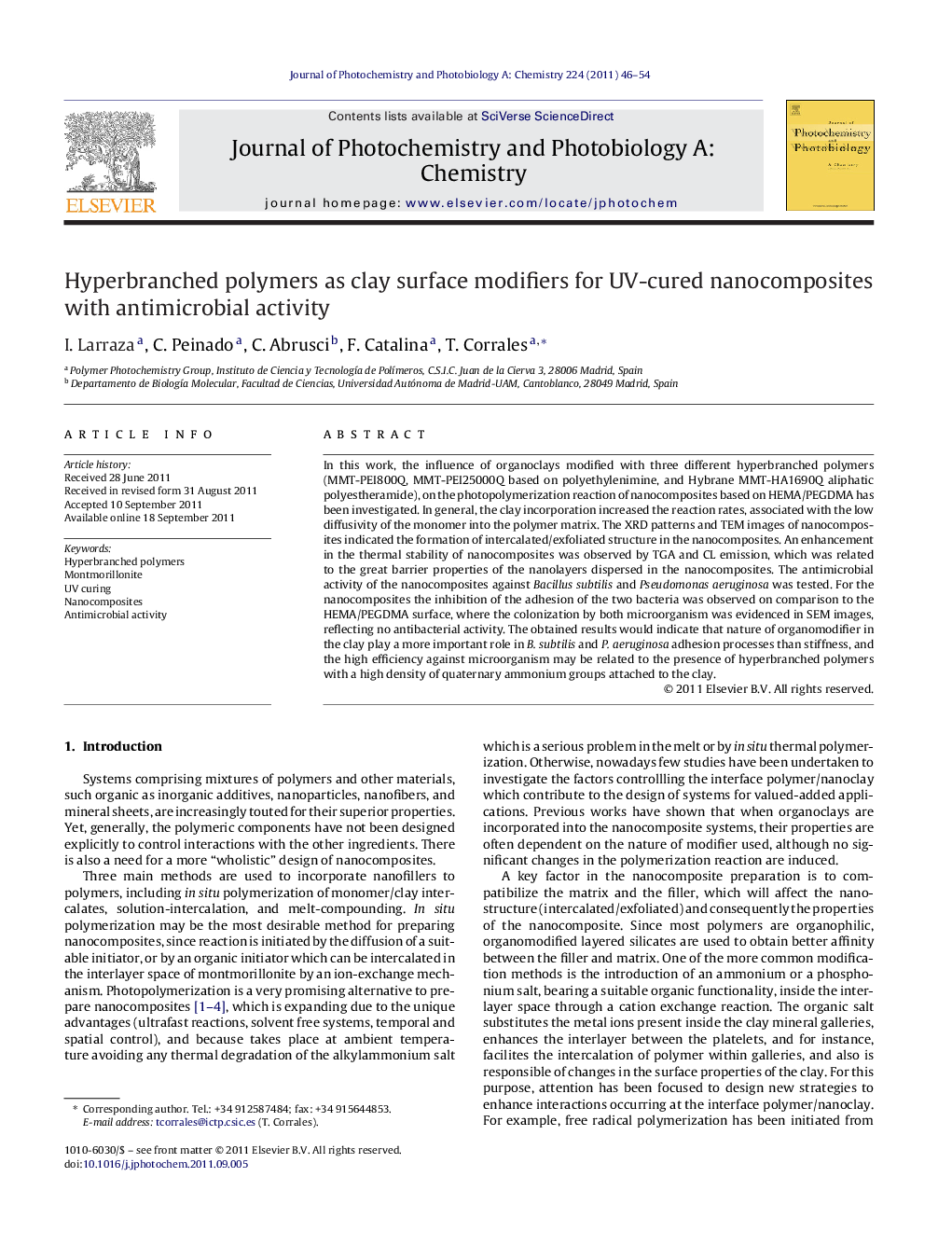| Article ID | Journal | Published Year | Pages | File Type |
|---|---|---|---|---|
| 27325 | Journal of Photochemistry and Photobiology A: Chemistry | 2011 | 9 Pages |
In this work, the influence of organoclays modified with three different hyperbranched polymers (MMT-PEI800Q, MMT-PEI25000Q based on polyethylenimine, and Hybrane MMT-HA1690Q aliphatic polyestheramide), on the photopolymerization reaction of nanocomposites based on HEMA/PEGDMA has been investigated. In general, the clay incorporation increased the reaction rates, associated with the low diffusivity of the monomer into the polymer matrix. The XRD patterns and TEM images of nanocomposites indicated the formation of intercalated/exfoliated structure in the nanocomposites. An enhancement in the thermal stability of nanocomposites was observed by TGA and CL emission, which was related to the great barrier properties of the nanolayers dispersed in the nanocomposites. The antimicrobial activity of the nanocomposites against Bacillus subtilis and Pseudomonas aeruginosa was tested. For the nanocomposites the inhibition of the adhesion of the two bacteria was observed on comparison to the HEMA/PEGDMA surface, where the colonization by both microorganism was evidenced in SEM images, reflecting no antibacterial activity. The obtained results would indicate that nature of organomodifier in the clay play a more important role in B. subtilis and P. aeruginosa adhesion processes than stiffness, and the high efficiency against microorganism may be related to the presence of hyperbranched polymers with a high density of quaternary ammonium groups attached to the clay.
Graphical abstractBiofilm formation with B. subtilis on (a) neat HEMA/PEGDMA and (b) nanocomposite with 1% MMT-PEI800Q.Figure optionsDownload full-size imageDownload as PowerPoint slideHighlights► Hyperbranched polymers were used as clay surface modifiers. ► Nanocomposites with antimicrobial activity were prepared by UV-curing. ► Adhesion of B. subtilis and P. aeuruginosa was inhibited by quaternary ammonium groups. ► The nature of organomodifier plays a more important role than stiffness.
